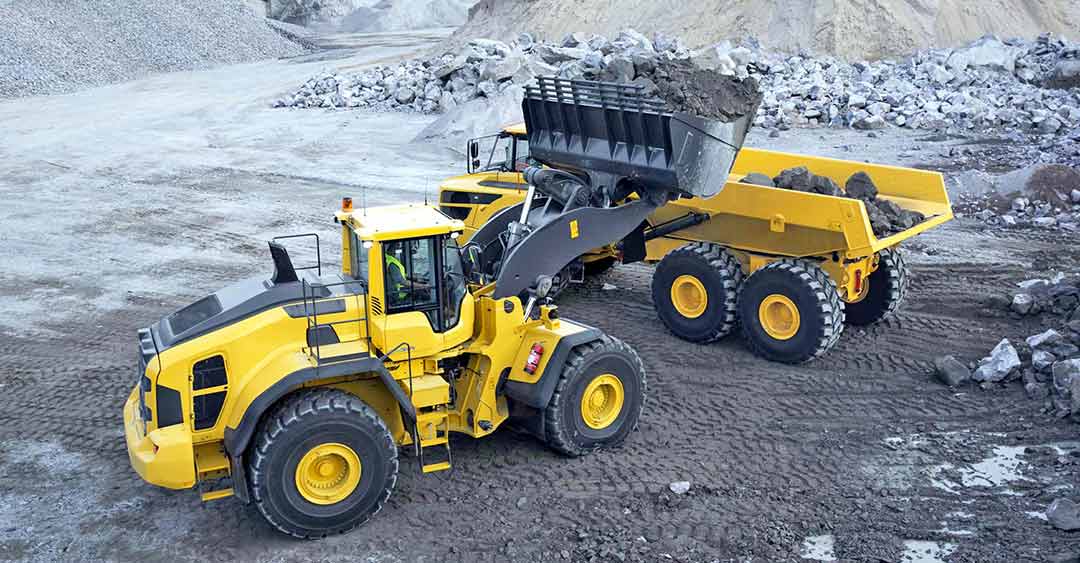
Heavy Plant & Vehicle Automatic Fire Suppression
Vehicle fires are incredibly vicious when they break out, spreading rapidly and when combined with the typical risks found on a vehicle they can cause devastating consequences. The combination of heat, flammable liquids, turbochargers, hot exhausts and electrical components in confined spaces, make for ideal conditions for a fire to break out.
Automatic fire suppression systems are available for a wide range of mobile and static equipment including Heavy Duty Excavators, Compactors, Groundwork Machines, Compressors and Generators, to give you the peace of mind that people and assets are protected.
Which Standards & Approvals Should You Look For?
Having a fire suppression system that has not been proven and verified by trusted laboratories is not an option.
P-Mark is the quality label from the Research Institutes of Sweden (RI:SE), the leading vehicle accreditation body. P-Mark according to SPCR 199 has been developed for fire suppression systems in engine compartments of heavy vehicles and has been quickly adopted globally as the benchmark for heavy vehicles.
Reacton was the first company to achieve certification to this standard for fire systems in heavy equipment vehicles. Reacton achieved the highest score possible in the P-Mark SPCR 199 with an A+ rating and Level of Openness rating of 1 (Fully Open). This performance ensures that even with the highest airflow, hidden fires are extinguished in conditions where foam and watermist systems often fail.
Reacton not only scored the highest possible marks in the Fire testing but were also using an extremely compact and economical system size, which are simple to upscale and configure with a large range of system sizes being approved.
AS-5062:2016 is the Australian Standard for fire protection of mobile and transportable equipment. The objective was to formalise good practice in reducing the incidence and severity of fires in order to safeguard life, property and the environment. As you would expect, Reacton also hold this approval for our system.
The test parameters outline the stringent requirements to achieve AS-5062 certification, considering elements such as typical fire scenarios, fuels that may be present, fire risk areas and the types of agent used to suppress the fire.
Reacton Fire Suppressions dedication and commitment to consistent product quality, independent testing and global approvals, gives you the peace of mind required to make Reacton your first choice when it comes to automatic fire suppression systems for heavy duty plant and vehicles.
Reacton Dual Agent Configuration
Reacton systems feature a Dual Agent configuration and give an outstanding fire suppression method due to combining the individual features of Dry Powder & Wet Chemical into one extremely effective solution. Not only does the system provide the rapid flame knockdown of Dry Powder but the cooling & blanketing properties of Wet Chemical, prevent re-ignition.
Reacton’s Dual Agent configuration also offers significant advantages to single-agent extinguishing mediums, as it can offer up to a 40% reduction in the automatic fire suppression system size, and requires no electrical power to operate the system.
As you would expect, our Heavy Equipment fire suppression components and systems are approved and certified to both standards.
In Conclusion
Reacton’s dedication to innovation and research and development ensures that your heavy plant and equipment are equipped with fire suppression systems offering the highest level of protection giving you peace of mind when operating is some of the most demanding environment in the world.
Protecting Your Future, Today
For more information please contact us using one of the following:
Tel: +971 483 572 23
Email info@reactonfire.com
Web: www.reactonfire.com
These Stories on Heavy Equipment Automatic Fire Suppression
Reacton HQ - UK and Europe
14 Baynes Place, Waterhouse Business Park, Chelmsford, Essex, CM1 2QX, UK
Reacton Americas
23335 N 18th Dr #140, Phoenix,
AZ 85027, United States
Reacton UAE
SIDRA Tower, Office 905,
Sheikh Zayed Road, Dubai, UAE
No Comments Yet
Let us know what you think